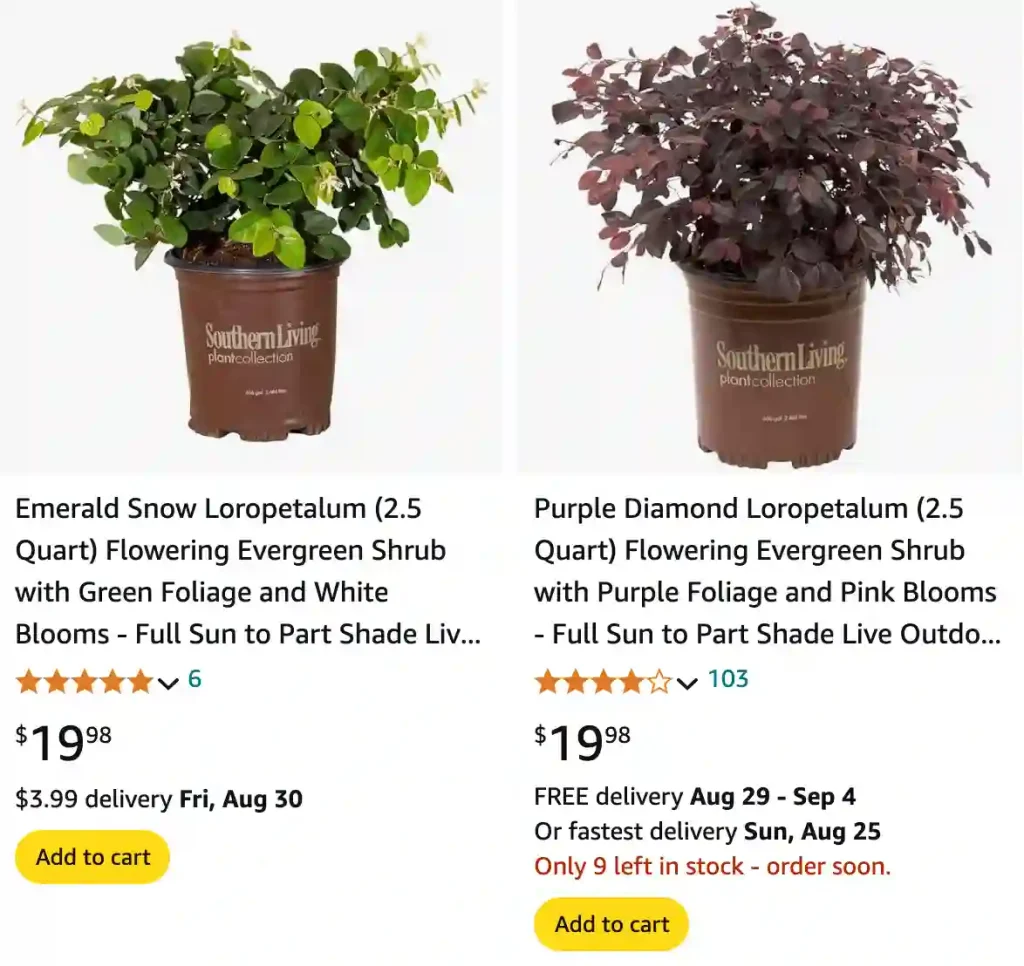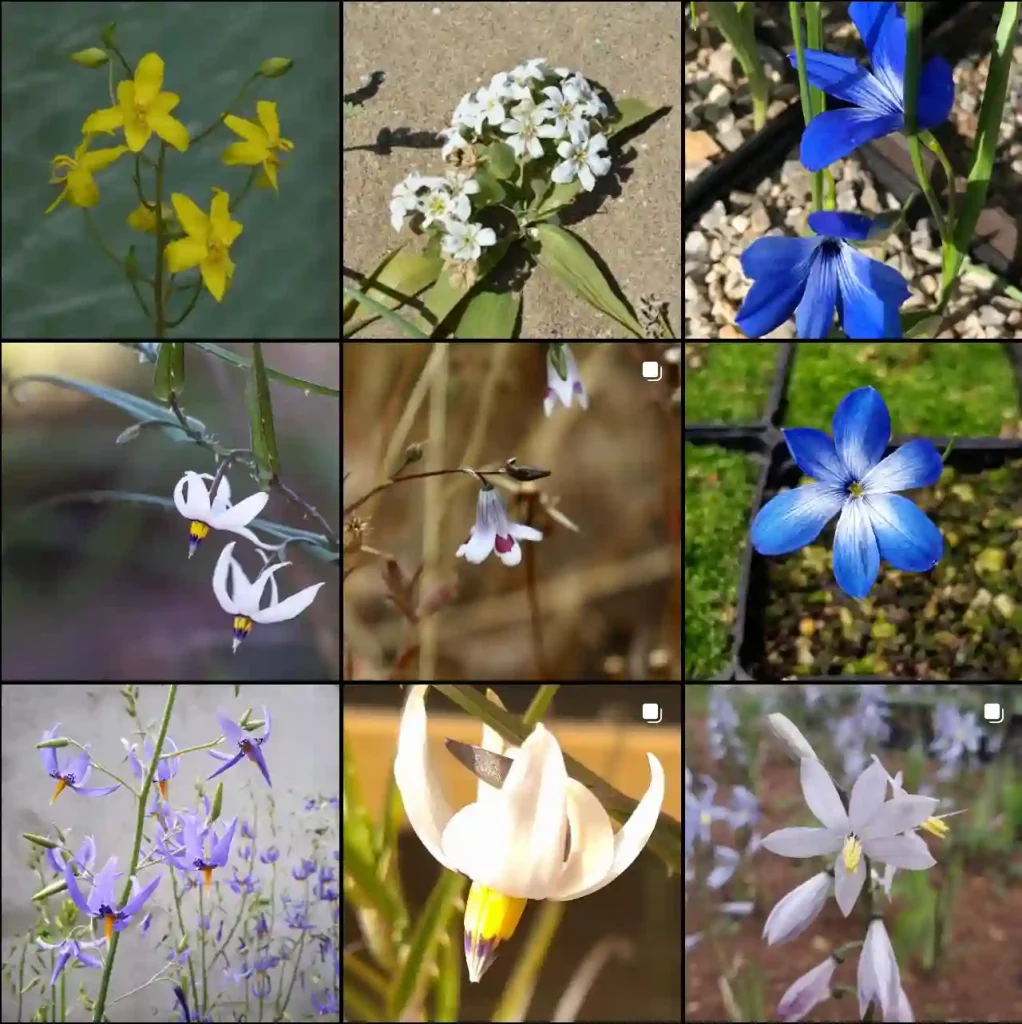
Frequently Asked Questions About Loropetalum
When I first ventured into gardening, I was drawn to Loropetalum for its stunning foliage and unique blooms. Over time, I’ve gathered a lot of insights about this plant. If you’re considering adding Loropetalum to your garden or just want to learn more, here’s a comprehensive guide to some of the most frequently asked questions.
What Is Loropetalum?
Loropetalum belong to the Hamamelidaceae family, also known as Chinese Fringe Flower, is a versatile evergreen shrub or small tree native to China, Japan, and the Himalayas. It’s cherished for its vibrant, ribbon-like flowers that can be pink, red, or white, and its attractive foliage that often comes in shades of purple or burgundy.
Loropetalum species
- Loropetalum axillare Y.S.Chen & Ye C.Xu
- Loropetalum chinense (R.Br.) Oliv. Plant FAQs: Loropetalum Chinense Kurobijin – Cerise Charm Loropetalum – Plant FAQs: Loropetalum Chinense Shang-Red – Red Diamond Loropetalum
- Loropetalum flavum Aver., P.K.Endress & K.S.Nguyen
- Loropetalum lanceum Hand.-Mazz.
- Loropetalum subcordatum Oliv.
When to Prune Loropetalum?
Pruning Loropetalum is best done in late winter or early spring before new growth begins. This timing helps avoid cutting off flower buds that would develop in the spring. If you need to shape the plant or remove any dead or damaged branches, this is the ideal time.
Is Loropetalum Evergreen?
Yes, Loropetalum is an evergreen plant. Its glossy, year-round foliage provides consistent color and structure in your garden. The leaves can range from deep green to rich burgundy, adding year-round interest.
Do Deer Eat Loropetalum?
One of the benefits of Loropetalum is its deer resistance. Deer generally avoid this plant due to its tough, leathery leaves and the plant’s strong scent. This makes it a great choice for gardens in areas with high deer populations.
Is Loropetalum Toxic to Dogs?
Loropetalum is not considered toxic to dogs. However, it’s always a good idea to monitor pets around plants to ensure they don’t chew on them excessively, as even non-toxic plants can cause digestive upset if ingested in large quantities.
How Fast Does Loropetalum Grow?
Loropetalum has a moderate growth rate. Under optimal conditions, it can grow about 6 to 12 inches per year. This makes it a good choice if you’re looking for a plant that will establish itself relatively quickly without becoming too large too fast.
How Far Apart to Plant Loropetalum?
When planting Loropetalum, space them about 3 to 5 feet apart. This spacing allows them to grow to their full size without overcrowding, which can lead to poor air circulation and potential disease issues.
When Does Loropetalum Bloom?
Loropetalum typically blooms in early spring and sometimes again in late summer or fall. The flowers are not only beautiful but also attract pollinators like bees and butterflies to your garden.
Will My Loropetalum Come Back?
Loropetalum is generally quite resilient. If it’s pruned correctly and given the right care, it should bounce back and continue to thrive year after year. However, harsh winters or improper care can sometimes cause dieback, but with proper treatment, it often recovers.
Can Loropetalum Grow in Shade?
While Loropetalum prefers full sun to partial shade, it can tolerate some shade, especially in hotter climates. However, its growth and flowering may be less vigorous in full shade. Aim for at least a few hours of sunlight each day to ensure optimal health and flowering.
Do Loropetalum Lose Their Leaves?
Loropetalum is evergreen, so it doesn’t typically lose its leaves seasonally. However, it may shed some leaves during the winter or in response to stress. If you notice excessive leaf drop, it could be a sign of environmental stress or disease.
How Big Do Loropetalum Get?
Loropetalum can vary in size depending on the variety. On average, it grows to about 4 to 8 feet tall and wide. Some dwarf varieties stay smaller, around 2 to 3 feet tall, while others can grow larger. Always check the specific variety you have for exact dimensions.
When to Fertilize Loropetalum?
Fertilize Loropetalum in early spring as new growth begins. Use a balanced, slow-release fertilizer to support healthy growth and blooming. Avoid over-fertilizing, as this can lead to excessive foliage growth at the expense of flowers.
Loropetalum vs. Barberry
Loropetalum and Barberry are often compared due to their similar uses as ornamental shrubs. While both offer vibrant foliage, Loropetalum stands out with its unique fringe-like flowers and evergreen leaves. Barberry, on the other hand, can have thorny branches and is deciduous in colder climates. The choice between them depends on your garden’s aesthetic and practical needs.
How to Care for Loropetalum?
Caring for Loropetalum involves regular watering, especially during dry periods. Ensure it has well-drained soil, as it does not like to sit in waterlogged conditions. Mulching around the base can help retain moisture and control weeds. Regular checks for pests and diseases will keep your plant healthy and thriving.
Common Problems with Loropetalum
Common issues with Loropetalum include leaf spot diseases and scale insects. Ensuring good air circulation and proper watering practices can minimize these problems. If you spot any issues, address them promptly to maintain plant health.
What to Plant with Loropetalum?
Loropetalum pairs well with other shrubs and perennials like Azaleas, Gardenias, and hostas. Its vibrant color complements a range of plants, making it a versatile addition to various garden styles.
By addressing these FAQs, I hope to help you better understand and care for your Loropetalum. It’s a fantastic plant with a lot to offer, and with the right care, it can be a stunning and resilient part of your garden.
If i die, water my plants!



